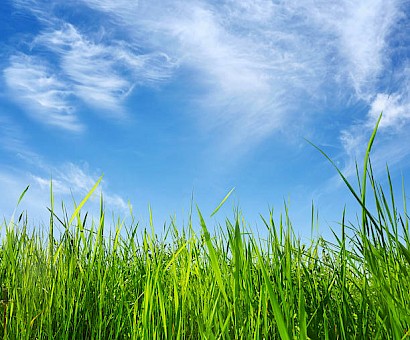These building materials are made out of grass
 While launching a sustainable furniture startup during the pandemic, serial entrepreneur Josh Dorfman watched as the price of wood skyrocketed. It got harder to find high-quality lumber, and he started wondering what alternative materials might be possible to use.
While launching a sustainable furniture startup during the pandemic, serial entrepreneur Josh Dorfman watched as the price of wood skyrocketed. It got harder to find high-quality lumber, and he started wondering what alternative materials might be possible to use.
At the same time, he connected with two former SpaceX engineers who were interested in wood alternatives for another reason: They saw an opportunity to rework construction materials to speed up carbon capture at a large scale. Trees suck up CO2 as they grow, but fast-growing grasses, they realized, can capture even more—and can be made into structural panels that are used to build homes.
“We can skip the tree altogether,” says Huade Tan, who previously helped develop spacecraft at SpaceX. Dorfman, Tan, and fellow SpaceX engineer Nathan Silvernail cofounded Plantd, a North Carolina-based building materials startup, to bring the new products to market.
The company, which just raised $10 million in a Series A funding round, uses a tall form of perennial grass that can grow 20 to 30 feet in a single year, absorbing as much as 30 tons of carbon. “Our vision is to take carbon out of the atmosphere as fast as possible and lock it away,” Dorfman says.
While a pine tree grown in a managed plantation might be harvested after 15 years, the grass can be harvested as many as three times in a season, and keeps growing back. Because it can be grown more easily, it can also help avoid supply chain shortages.
The team is developing its own automated, modular, all-electric equipment that can shred the fiber from the grass and put it back together to form the structural panels that are used in walls, roofs, and subfloors in construction. Like wood, the grass contains strong cellulose fiber. It can be manipulated in a similar way to how mills make engineered wood, though the startup is designing custom equipment to boost the quality of the final product, keep costs low, and shrink the carbon footprint of production. The factory will also be able to make cross-laminated timber for larger buildings, replacing carbon-intensive steel and concrete.
The products can compete on cost with wood panels, the founders say, and are stronger, lighter, and more resistant to moisture. “We see the greatest opportunity to lock away the most carbon when we make a superior product than what exists today,” Dorfman says. “And do it in a way where that end customer can still build exactly the same way … they don’t have to change in any respect.”
Later this year, a local farmer will begin planting acres of the grass for the company. (The team declined to share the name of the species of plant for proprietary reasons.) Dorfman says there’s interest from other farmers as well. “Here in North Carolina, it’s tobacco country,” he says. “And tobacco farmers don’t want to grow tobacco anymore.” They’re looking for a more environmental and economically sustainable crop, he says.
There’s enough underutilized farmland in the U.S. for the crop to easily scale up, says Tan. And if the company can succeed, it could help shrink the number of acres of tree plantations that are needed, potentially making room for natural, long-term forests to regrow in their place. “At scale, what this allows us to do is to shrink how land is used for monoculture tree farms,” he says.
You can return to the main Market News page, or press the Back button on your browser.

